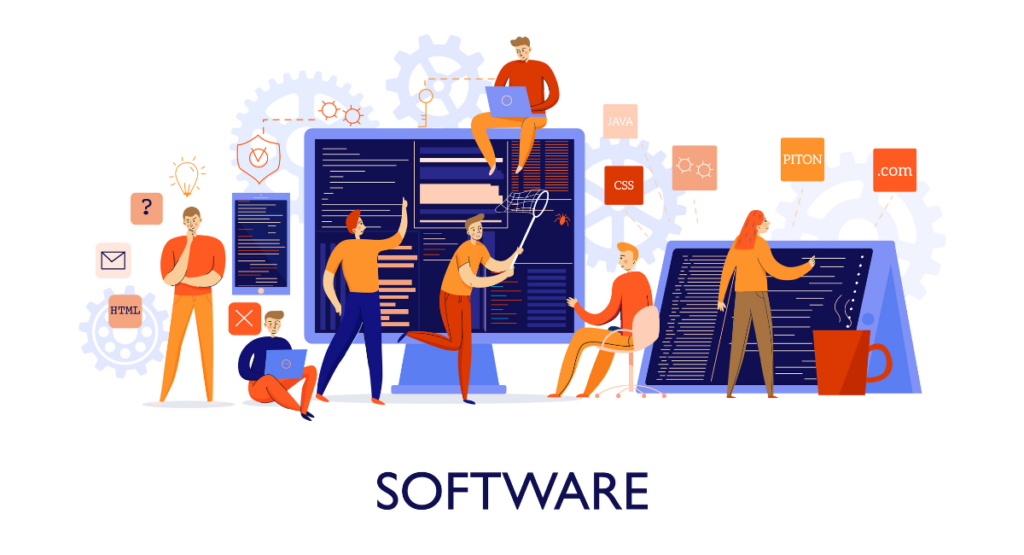In the fast-paced world of software development, ensuring the highest quality of your product is no longer an option it's a necessity.
With the increasing complexity of systems and the rising expectations of end-users, understanding software testing basics has never been more critical.
This blog post will walk you through the essentials of software testing basics, from its foundational principles to emerging trends, equipping you with the knowledge to enhance your testing processes and deliver superior software.
The Software Testing Basics

Defining Software Testing
Software testing basics involve a systematic process that evaluates and verifies that a software application or system meets specified requirements and works as intended.
It aims to identify defects, ensure quality, and provide insights into the software's reliability and performance. By rigorously applying software testing basics before release, organizations can avoid costly post-release issues and enhance user satisfaction.
Fundamental Principles of Software Testing
The principles of software testing basics serve as the bedrock for effective testing strategies. These principles include:
- Early and Continuous Testing: Begin testing early in the development lifecycle and continue it throughout to catch defects sooner and reduce overall costs.
- Defect Clustering: Recognize that a small number of modules usually contain most of the defects. Focus efforts on these areas for maximum impact.
- Pesticide Paradox: Regularly update and diversify test cases to uncover new defects and avoid becoming ineffective over time.
- Testing Shows the Presence of Defects: Testing can show that defects are present but cannot prove the absence of defects. Thorough testing increases confidence in the software’s quality.
The Importance of Software Testing in the Software Development Lifecycle
Incorporating software testing basics into every phase of the software development lifecycle (SDLC) ensures that defects are identified and resolved early, leading to a more stable and reliable product.
Testing helps validate requirements, verify design, and ensure that the final product meets user expectations. By making software testing basics an integral part of the SDLC, organizations can achieve higher quality software, reduce time-to-market, and enhance customer satisfaction.
Types of Software Testing

Unit Testing
Software testing basics include unit testing, which involves testing individual components or modules of a software application in isolation.
Developers typically perform this type of testing to ensure that each unit functions correctly. Unit tests are crucial for identifying issues early in the development process and facilitating easier debugging.
Integration Testing
Integration testing, another aspect of software testing basics, focuses on assessing the interactions between different modules or components of a software application.
The goal is to identify any issues that arise when individual units work together. By testing the integration points, teams can ensure seamless communication and data exchange between modules.
Functional Testing
Functional testing evaluates the software against specified functional requirements, an essential part of software testing basics. This type of testing verifies that the application performs its intended functions correctly.
Testers simulate user interactions and assess whether the software behaves as expected, covering all possible scenarios.
Performance Testing
Performance testing assesses the software's responsiveness, stability, and scalability under various conditions.
This type of testing, as covered in software testing basics, identifies performance bottlenecks and ensures that the application can handle expected workloads.
Key aspects of performance testing include load testing, stress testing, and endurance testing.
Security Testing
Security testing, a vital component of software testing basics, evaluates the software's ability to protect against threats and vulnerabilities.
This type of testing aims to identify security weaknesses and ensure that the application can withstand potential attacks. Techniques such as penetration testing, vulnerability scanning, and risk assessment are commonly used in security testing.
Usability Testing
Usability testing focuses on assessing the application's user experience and interface design. This type of testing involves real users interacting with the software to identify usability issues and gather feedback.
Software testing basics ensure that the application is intuitive, user-friendly, and meets the needs of its target audience.
Best Practices in Software Testing
Key Principles for Effective Software Testing
To achieve success in software testing basics, it's essential to adhere to key principles and best practices:
- Comprehensive Test Planning: Develop a detailed test plan that outlines objectives, scope, resources, timelines, and test strategies. A well-structured plan serves as a roadmap for the testing process.
- Risk-Based Testing: Prioritize testing efforts based on the potential impact and likelihood of defects. Focus on high-risk areas to maximize the effectiveness of testing.
- Continuous Improvement: Regularly review and refine testing processes to enhance efficiency and effectiveness. Encourage a culture of learning and adaptation within the testing team.
The Role of Automation in Improving Testing Efficiency and Coverage
Automation plays a crucial role in modern software testing basics by increasing efficiency, reducing human error, and enhancing test coverage.
Automated tests can be executed frequently and consistently, providing rapid feedback to developers. Key benefits of test automation include:
- Faster Execution: Automated tests run significantly faster than manual tests, enabling quicker detection of defects.
- Repeatability: Automated tests can be reused across multiple test cycles, ensuring consistent results.
- Scalability: Automation allows for the testing of large and complex applications, covering a wide range of scenarios.
Common Challenges in Software Testing
Managing Changing Requirements
One of the most common challenges in software testing basics is managing changing requirements. Frequent changes can lead to test case rework, increased testing effort, and potential defects. To address this challenge, it's essential to:
- Maintain Communication: Establish clear communication channels between testing and development teams to stay updated on requirement changes.
- Adopt Agile Practices: Implement agile methodologies that accommodate changes and promote iterative development and testing.
- Use Test Management Tools: Leverage test management tools to track changes and maintain traceability between requirements and test cases.
Ensuring Test Coverage
Achieving comprehensive test coverage can be challenging, especially for large and complex applications. To ensure adequate test coverage, software testing basics suggest:
- Develop Test Matrices: Create matrices that map test cases to requirements, ensuring all functionalities are tested.
- Utilize Test Design Techniques: Apply test design techniques such as boundary value analysis, equivalence partitioning, and decision table testing to create effective test cases.
- Automate Regression Testing: Automate regression tests to quickly verify that new changes do not impact existing functionality.
Balancing Manual and Automated Testing
Striking the right balance between manual and automated testing is crucial for effective software testing basics. While automation offers numerous benefits, some scenarios require manual testing for accurate results. To achieve this balance:
- Identify Suitable Candidates for Automation: Automate repetitive, time-consuming, and stable test cases while reserving exploratory and usability tests for manual execution.
- Invest in Test Automation Frameworks: Use robust test automation frameworks that support scalability, maintainability, and integration with other tools.
- Continuously Evaluate: Regularly assess the effectiveness of automation and manual testing efforts, making adjustments as needed.
The Future of Software Testing
AI and Machine Learning in Testing
Artificial intelligence (AI) and machine learning (ML) are revolutionizing software testing basics by introducing intelligent automation, predictive analytics, and self-healing tests.
AI-driven testing tools can analyze vast amounts of data, identify patterns, and optimize test cases for higher efficiency. Additionally, ML algorithms can predict potential defects, enabling proactive testing and risk mitigation.
Shift-Left Testing
Shift-left testing is a practice that advocates for early testing in the development lifecycle. By involving testers from the initial stages of development, teams can identify and address issues sooner, reducing the overall cost and effort.
Shift-left testing promotes collaboration between developers and testers, fostering a culture of quality from the start, which is a key principle of software testing basics.
Continuous Testing and DevOps
Continuous testing is an integral part of the DevOps approach, where testing is seamlessly integrated into the continuous integration and continuous delivery (CI/CD) pipeline.
This practice ensures that every code change is automatically tested, providing rapid feedback and enabling faster releases. Continuous testing enhances agility, accelerates time-to-market, and improves software quality, aligning with the core of software testing basics.
Book a Demo and experience ContextQA testing tool in action with a complimentary, no-obligation session tailored to your business needs.
Conclusion
Understanding software testing basics is essential for delivering high-quality software in today's competitive landscape. By mastering the fundamental principles, implementing best practices.
And staying abreast of emerging trends, organizations can enhance their testing processes and achieve superior results. Remember, effective software testing basics are not a one-time effort but a continuous commitment to quality.
Ready to take your software testing basics to the next level? Explore our recommended resources and tools to deepen your understanding and refine your testing strategies.
Whether you're a QA engineer, developer, or project manager, these insights will empower you to make informed decisions and drive excellence in your software projects.
Also Read - What Challenges Are You Facing In Learning Test Automation?
We make it easy to get started with the ContextQA tool: Start Free Trial.
